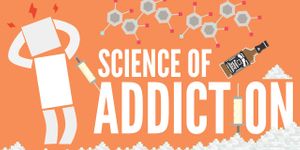
In spite of the fact that few products have reached the market and captured strong revenues thus far, the gene therapy pipeline continues to remain large, with 906 products in active development across all stages, according to Dominic Trewartha, managing analyst at GBI Research, a business intelligence provider. However, the majority of these products are in early stages of development, with 76 percent of them at either the discovery or preclinical stage, Trewartha cautioned in an article in
Drug Discovery & Development.
GBI Research’s latest report reveals that oncology, infectious diseases, genetic disorders, cardiovascular diseases and ophthalmological indications are the most active pipeline sectors. In addition, these areas are the most widely studied in terms of the number of clinical trials performed.
There are 266 pipeline gene therapies in active development for oncology, which is more than double the number of those for central nervous system disorders, which is the second-largest therapy area. Additionally, oncology also figured into 64 percent of gene therapy clinical trials between 1989 and 2012. The report also revealed that oncology is the predominant area for gene therapy developments because of its high prevalence and genetically driven pathophysiology.
Trewartha explained that one reason for the big overall pipeline is the potential for these therapies to become strong drugs by targeting diseases on a genetic level. Whereas there are no products that have fulfilled this promise at the present time, developers expect that they will do so in the future.
Based on pipeline activity, GBI Research’s report also states that Isis Pharmaceuticals is a major player in the gene therapy research and development space, with 31 gene silencing-based programs in development across the key therapy areas. Also, Sarepta and Alnylam Pharmaceuticals are key players, with 25 and 24 pipeline products in development, respectively.
Analysts who wrote the report believe that in the next decade, these late-stage pipeline developments may translate into clinically and commercially successful gene therapies entering the market. Nonetheless, they think that high pipeline failure rates because of challenges in developing safe and efficient delivery vectors will remain a barrier. They cite other potential obstacles to gene therapy development, including difficulties in manufacturing and purifying viral vectors, as well as increased regulatory oversight by the US Food and Drug Administration and general caution from worldwide regulatory bodies following previous trial deaths.
 In spite of the fact that few products have reached the market and captured strong revenues thus far, the gene therapy pipeline continues to remain large, with 906 products in active development across all stages, according to Dominic Trewartha, managing analyst at GBI Research, a business intelligence provider. However, the majority of these products are in early stages of development, with 76 percent of them at either the discovery or preclinical stage, Trewartha cautioned in an article in
In spite of the fact that few products have reached the market and captured strong revenues thus far, the gene therapy pipeline continues to remain large, with 906 products in active development across all stages, according to Dominic Trewartha, managing analyst at GBI Research, a business intelligence provider. However, the majority of these products are in early stages of development, with 76 percent of them at either the discovery or preclinical stage, Trewartha cautioned in an article in 





![Everything You Need To Know About NGS [eBook]](https://d3bkbkx82g74b8.cloudfront.net/eyJidWNrZXQiOiJsYWJyb290cy1pbWFnZXMiLCJrZXkiOiJjb250ZW50X2FydGljbGVfcHJvZmlsZV9pbWFnZV9mNTM1ZjIyYzA5MDE5ZmNmMWU5NmI0ZDc4NWU2MzdiZTZlN2I5ZDk5XzE4NDUuanBnIiwiZWRpdHMiOnsidG9Gb3JtYXQiOiJqcGciLCJyZXNpemUiOnsid2lkdGgiOjcwMCwiaGVpZ2h0IjozNTAsImZpdCI6ImNvdmVyIiwicG9zaXRpb24iOiJjZW50ZXIiLCJiYWNrZ3JvdW5kIjoiI2ZmZiJ9LCJmbGF0dGVuIjp7ImJhY2tncm91bmQiOiIjZmZmIn19fQ==)

